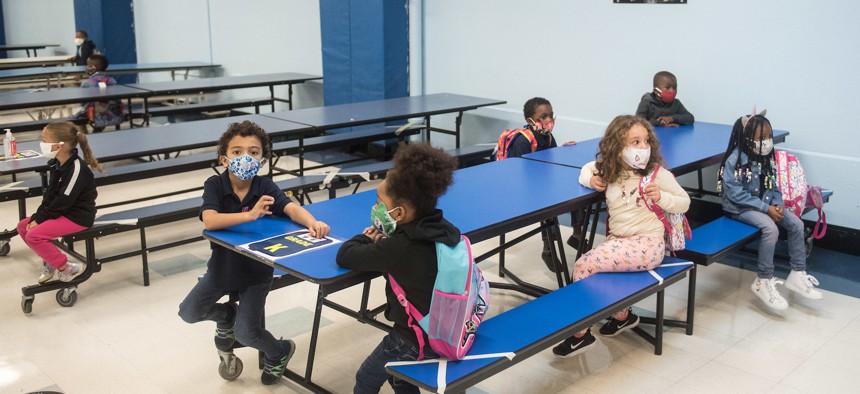Education
School districts still laying off staff amid funding uncertainty
Though the state restored aid payments, schools are still preparing for possible cuts in the future.

Students at P.S. 188 The Island School on September 29th. Michael Appleton/Mayoral Photography Office
Throughout the summer, as New York contended with a $14.5 billion budget gap, the state withheld 20% of aid payments to schools. The New York State United Teachers union sued, and the state reversed course, pledging to commit to fully funding schools in September, and that it wouldn’t make any more decisions on cuts until the presidential election or further action from Congress. But advocates and school officials say that without knowing how long the payments will continue, there’s no realistic way to budget for the rest of the year – and students and staff will be the ones to suffer.
School districts particularly dependent on state funds have been especially hard hit going into the fall school year. Albany and Schenectady were among the localities that ended up limiting older students to remote learning because of their strained budgets. The budget crisis has led to mass layoffs at many school districts. Rochester City School District has planned to lay off more than 200 food service workers and school security staff, after more than 100 teaching assistants were laid off in August. More than 200 teachers and other staff also lost their jobs last Friday in Albany.
“The wise thing to do, the efficient thing to do, is to actually make cuts sooner rather than later,” said Jasmine Gripper, executive director of the Alliance for Quality Education, an industry group that advocates for low-income students. Many school districts are being forced to consider the worst-case scenario when making decisions about their budgets because they aren’t sure what to expect later in the year, she said, which will have dire consequences for high-needs districts particularly dependent on state dollars.
For example, Schenectady laid off more than 400 staff in addition to other cost-saving measures as it contends with a projected $28.5 million loss in state aid, assuming the 20% withholding were to continue. “Once we begin spending money down during the course of the school year, it makes it even more difficult to make up any potential gaps,” Schenectady City School District interim Superintendent Aaron Bochniak told City & State. “To consider making up a $30 million gap mid-year, we would even maybe have to cut deeper than we already did.”
State Budget Director Robert Mujica described the cuts being made locally as premature in a Times Union op-ed from Sept. 16, as the state has withheld an overall small portion of school aid and avoided cuts so far. Freeman Klopott, a spokesman with the state Division of Budget, wrote in a statement: “Only 1% of annual school aid has been temporarily withheld, the September payments are being made in full, and going forward, we will continue to advocate for federal assistance and evaluate the State’s fiscal condition each month with any future actions taking district need into account.”
Gripper, whose organization ultimately supports circumventing school cuts by raising taxes on wealthy New Yorkers or tapping into the state’s rainy day fund, said New York should follow Ohio’s lead when considering cuts to state aid. Cleveland’s school district, which is predominantly made up of low-income students, only lost 1% of its state funding, whereas Ohio Gov. Mike DeWine cut 40% of state funds from a wealthier suburban district. An across-the-board 20% cut to state aid in New York would amount to a cut of $2,626 per student in districts with more low-income students and more Black and Latino youth, according to a report from the Alliance for Quality Education, whereas the same cut would only translate to $873 per student in the state’s wealthiest school districts.
The Cuomo administration has said it wouldn’t pursue any across-the-board cuts and would take into account districts’ needs, but has not released any further details. That’s one question of particular interest to Bochniak, who oversees a school district that relies heavily on state aid and where nearly 80% of students are economically disadvantaged.
“We can’t really operate not knowing what we’re doing one month to the next, especially when we’re dealing with kids,” Bochniak said.

NEXT STORY: Andy King likely to be kicked out of NY City Council